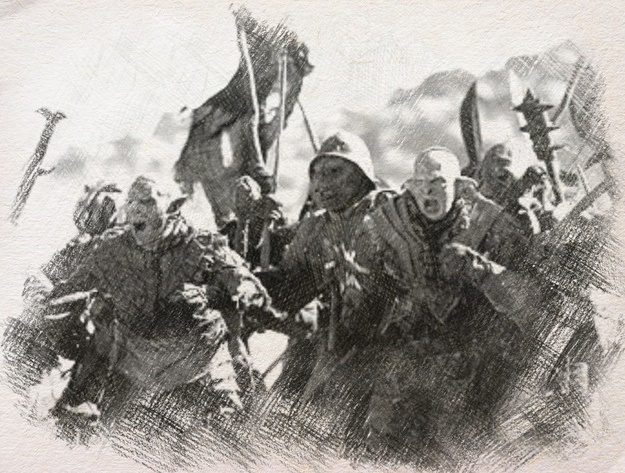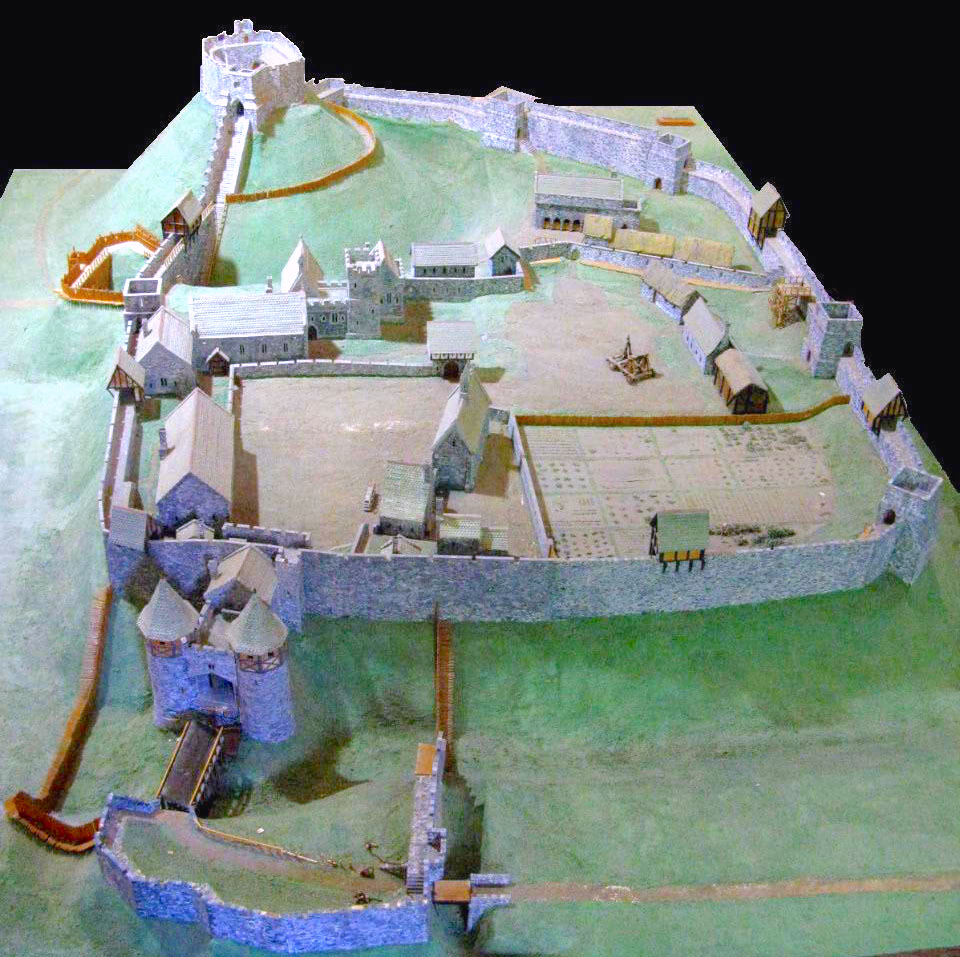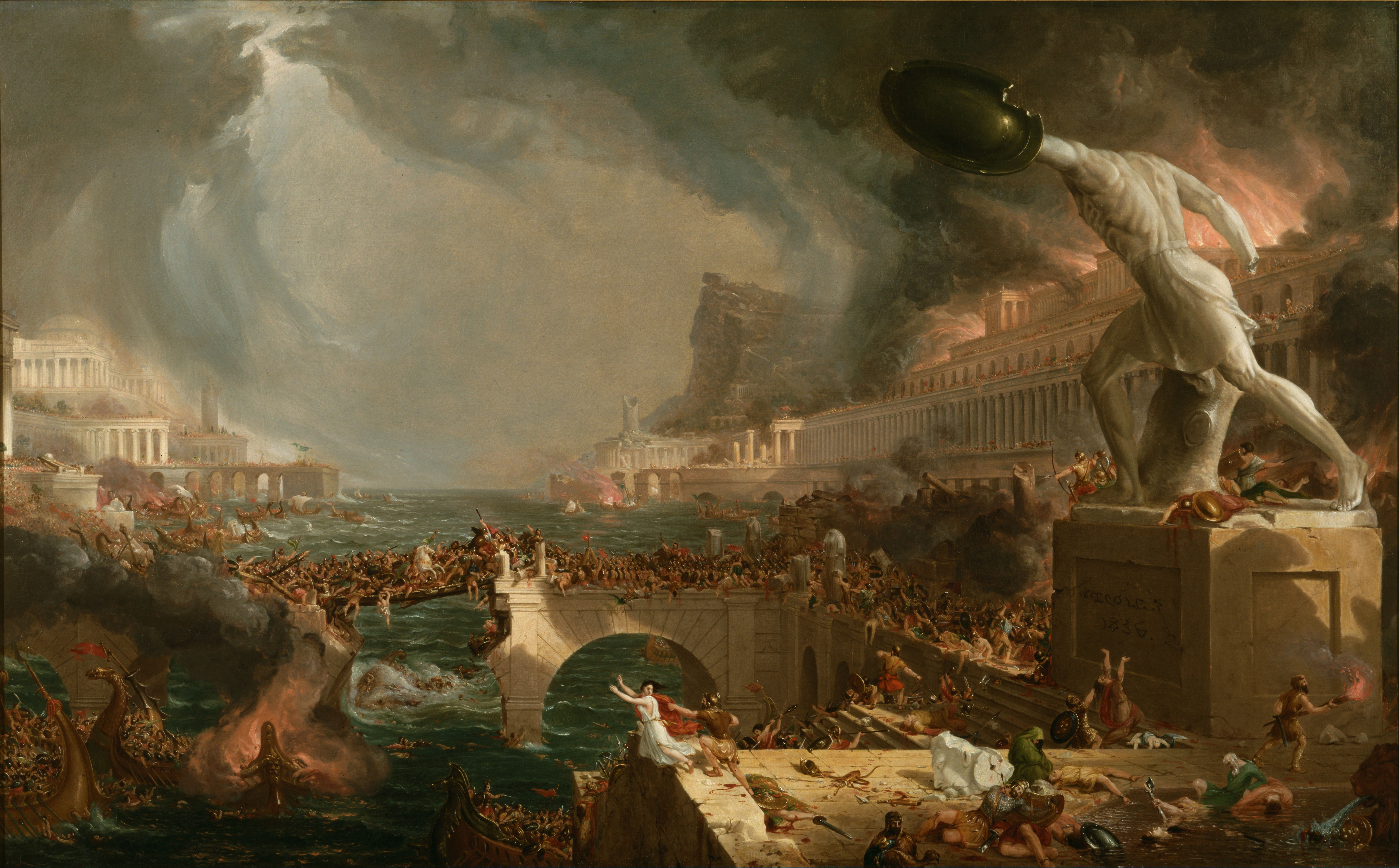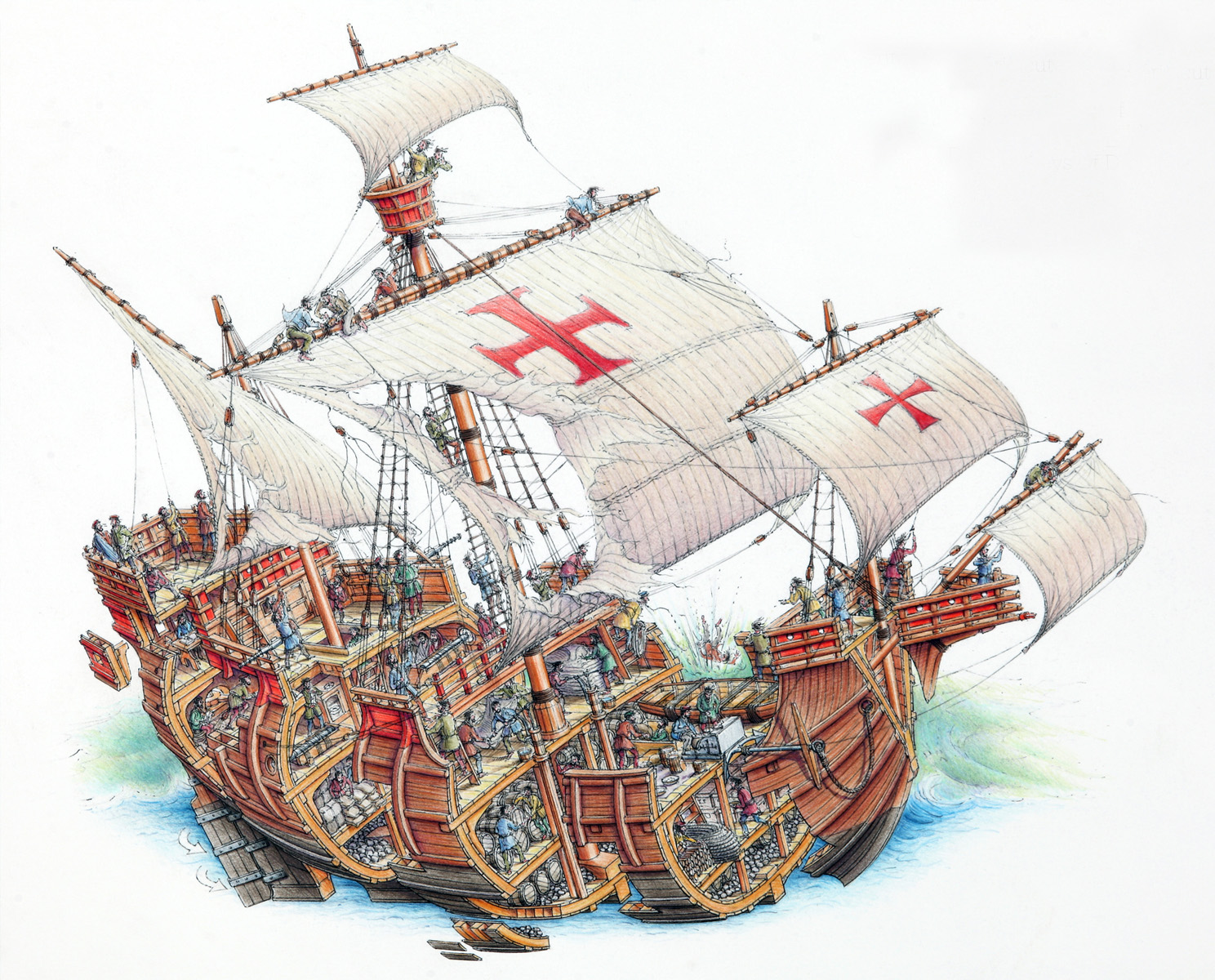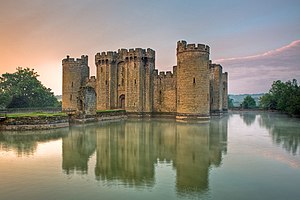One of the more enjoyable features of my old
Starfire games was generating the random star systems that can be explored and colonized by your growing empire. The
ACKS rules leave the nature of a ruler's starting territory intentionally vague, since exploration is something you're supposed to do directly as heroes on the way to "earning" your first stronghold. When starting a high-level game, it's important to have a good kingdom-generator that integrates with the existing rules. Here's my attempt!
The rules specify that you need a "land value" multiplier in the range 3-9, so my intent is to develop a procedure to
- generate a random piece of mapped terrain
- derive the land value from that terrain, yielding a value in that range (probably toward the higher end, since an established hero would make an intelligent pick of the best option available).
 |
| One small part of a world-map hex |
Let's run through some steps in order, using graphics from
Hexographer. Here's a blank hex-of-hexes (shaded), containing a total of 61 6-mile hexes for a total land area of around 2000 square miles. For sake of reference, this region is about the size of
Prince Edward Island in Canada, just a bit larger than Rhode Island. This is tiny for a kingdom, but pretty substantial as the holdings of a starting baron. Of course, you won't be able to administer all this land at once, since
ACKS limits the size of a personal domain to only 16 of the smaller 6-mile hexes. But it defines a region each player can carve up to create the personal domain (out the most valuable parts), and then later, some land grants for loyal vassals (out of the less valuable parts). Each world-map hex contains roughly 20-30 regions of this size, so it's sensible that multiple players could be neighbors in the same world-map hex.
Step 1: Creating a River

Most valuable land historically was close to a river for the sake of drinking water, transportation, and irrigation. I'm going to assume that any fantasy world works the same way, and that (for sake of fairness) every player should have access to a river large enough to deploy boats and sail them out to the ocean. Let's begin by starting the river in the center, to make sure it goes cleanly through the hex, and then random-walk the river out to the edges by dicing for directions.

For example, the river to the right was generated by rolling a 3, a 1, a 6, a 6, a 6, a 5, and finally a 6 to exit the region. Any results that bumped into an existing river hex (or left no legal placement for the other half of the river) were rerolled.
This gives one side of the river. Now we head back to the center and repeat the process. This is a really twisty river, and nearly half the hexes in this region will have excellent access to water. A more average result might yield a river that exits the region more quickly and leaves more non-river hexes. I would expect about 15-20 river hexes on average, out of the original 61.
This looks a little unrealistic, so let's do an artistic clean-up by drawing over the existing river in order to remove the angular corners, and then delete the angled connected-dots version. This gives a final version of the completed river.
Step 2: Adding Terrain
Terrain is going to determine land value. For starting terrain, I would say that the land along the river is developed, and contains whatever land is regarded as most valuable by a certain type of settlers. Humans would want cropland, but other fantasy races might want something else: hills for dwarves, or forest for elves. So I'll just assume that the river hexes are full of whatever land is optimal for the ruler's race. If you aren't playing a human ruler, then replace them with something more appropriate.
Next, we add the surrounding terrain. This is the type of terrain shown on the world map. In the case of Green Pass (or really, the hexes adjacent to it in Elysion), this would be forest. So all the land adjacent to river will contain forest. Finally, for regions with multiple hexes, I'll roll a random 1d6 check. On a 1-2, the forest rises up into hills and mountains. On a 3-4, it sinks down into a swamp. Otherwise, it's just a forest all the way back.
For my one region with a depth greater than one hex from the river, I get a 1. So I'll add a hills hex beyond the forest. In general, each hex adjacent to the river gets a forest, each hex adjacent to the forest gets hills, and each hex adjacent to the hills would get mountains (if I had one!) Now my map looks like this.
Step 3: Adding Resources
This map is a little boring right now. Let's add some strategic resources. Each hex might potentially contain a certain type of resource (river - fish, forest - timber, mountains - gold, etc), but they all have the effect of making that hex more valuable. To place resources, roll a 1d12, and count through each column of hexes one row at a time. For example, if I roll a 9, I count through the four hexes of the first column, and then go five hexes into the next column. There's my first resource, in the forest at the bottom of the second column! Each new resource appears 1d12 hexes beyond the previous one. With a lucky set of rolls, they could be densely packed.
Next I add some mysterious ruins. I like the idea that the ruins represent the places that the ruler explored, back when he was a wet-behind-the-ears adventurer. For this, I'll do the same thing but using a 1d20. It's quite possible that ruins might appear in the same hex as a resource (grey used for clarity if they overlap).
Here's the new result:
For even more flavor, I'm going to roll on some random tables (from Kevin Crawford's
An Echo, Resounding) to give some descriptive attributes to the ruins. Then I'll give each result an in-game effect that makes the ruins valuable! My results are:
- An ancient settlement (Wealth) filled with great artworks (Social).
- An empty tower (Military) on top of rich resources (Wealth).
- Prehuman ruins (Wealth) with an ancient armory (Military).
- A crumbling fortress (Military) with a commanding location (Military).
- Another ancient settlement (Wealth) with scrolls explaining lost techniques (Wealth).
A domain that contains ruins gains benefits associated with the fame and prestige that comes from being built on glorious ruins. Each Wealth result will act as another resource. Each Social result will add another 1d10 families to population growth every month. Each Military result will grant a morale bonus to any soldiers defending the domain against an enemy invasion (the "defending homeland/sacred ground" bonus that says "Judge's discretion) on the
D@W morale table).
I could roll for resources, but it's easier to just assign them logically (rivers get fish!) like Civilization does. Later I might have a longer list, for now I'll just go with:
- River/Lake/Swamp/Coast - Fish (Wealth)
- Forest - Timber (Wealth)
- Desert - Salt (Wealth)
- Grassland - Pasture (Wealth)
- Hills - Common Metals (2x Wealth and Military)
- Mountains - Precious Metals (2x Wealth and Social)
Each resource boosts supply and suppresses demand on the "Environmental Adjustments to Demand" table for trading, which means that your traders can get a discount when purchasing that good to sell to other markets (if you build a caravan or trade ship fleet).
Step 4: Placing Strongholds
The
ACKS rules tell you how much of a total investment you need in stronghold construction to protect a domain of a given size. We'll assume that the area is close enough to friendly cities to count as "civilized", which means we need 15,000 gp worth of stronghold for each hex. That the cost of a small tower. If we use 16 hexes of domain (the maximum size) that will require 240,000 gp of total stronghold.
To be included in the domain, a hex must be adjacent to a stronghold of at least 15,000 value (my own house rule, since
ACKS leaves building placement abstract). That means a single stronghold can only control a domain of 7 hexes, maximum. To extend beyond that requires one or more watchtowers. The total value of stronghold construction can be divided up any way desired to secure a desired number of domain hexes, although it makes sense to have at least one large central stronghold to protect the domain's leader and treasury vault's! The only constraint is that each domain hex must be adjacent to at least one stronghold structure.
Here's my result, after adding strongholds:
The main castle is on the right (on top of the ruins), and there are three other watchtowers to control the outer land holdings. You could assign them to trusted vassals as "practice domains" to allow a vassal to gain some experience managing a small piece of land. (Well, assuming he survived!) Of course, domains managed by low-level vassals get some penalties due to the reduced enthusiasm that peasants have for being placed under a junior baron.
Incidentally, the D@W rules specify that any stronghold on a river or in mountains gets certain defensive advantages against a siege. A crooked river (like the main castle above) would probably count as a peninsula, giving a larger bonus.
Step 5: Calculating Land Value
ACKS assumes that each domain has a land value between 3 and 9. To value land in a more interesting way than rolling 3d3, try this:
- Add 3 for each hex in a river, 2 for each hex adjacent to a river, and 1 for any other hex.
- Add 3 for each hex in optimal terrain (grassland for human, forest for elves, hills for dwarves), add 2 for most other hexes, but only add 1 for a swamp or desert hex.
- Add 1 for each Wealth result from resources or ruins.
- Divide the total by the number of hexes in the domain.
For example, the map above gives (11*3 + 5 * 2) + (12 *3 +4*2) + (4 + 8) = 99, and 99/16 = 6.1875. Round this off to 6.2 -- this is the land value! The various ruins will also give a morale bonus of +4 to any troops defending the domain.
This method should give most starting domains a land value close to 6, which is the average of the 3d3 random rolling method. With good resource rolls, it could trend up toward 7, but often at the cost of a spread out "gerrymandered" domain that would be harder to defend. Small domains can capitalize on including only the best concentrations of resources, which helps to balance them a bit against large ones.
Land discovered during adventuring might be worse, since it represents an unsettled wilderness. It's also going to require larger garrisons, and support fewer peasants. But it's unlimited, and free for the taking! By contrast, the land in the region above represents a one-time land grant from a generous king, and the land next door is already owned by other lords (who wouldn't part with it for anything short of a small fortune).





